Thermal Management for a Stadium Power Supply Container Using a Rack-Level Air Cooling Strategy
Abstract
:1. Introduction
2. Numerical Model and Validation
2.1. Porous Media Model of Batteries Cabin
2.2. Air Cooling Model of Power Supply Container
- (1)
- Centralized air-cooling model
- (2)
- Closed cabinet air cooling model
2.3. Numerical Model Validation
3. Results and Discussion
3.1. Centralized Air Cooling
- (1)
- Effect of vertical air supply channel structure
- (2)
- Effect of air supply velocity
- (3)
- Effect of battery heat output
3.2. Rack-Level Air Cooling
3.3. Improvement on Rack-Level Cooling
4. Conclusions
Author Contributions
Funding
Data Availability Statement
Conflicts of Interest
Nomenclature
| a | Permeability |
| C2 | Inertial resistance coefficient |
| D | Viscous resistance coefficient |
| Lx | Column spacing, mm |
| Ly | Linespacing, mm |
| Nx | Number of columns |
| Ny | Number of rows |
| ∆n | Thickness of porous media region, m |
| ∆p | Pressure drop, Pa |
| S | Additional resistance source term |
| ∆t | Time variation, min |
| ∆Tmax | Maximum temperature difference, K |
| v | Velocity of liquid, m/s |
| Greek symbols | |
| μ | Dynamic viscosity, Pa·s |
| ρ | Density of fluid, kg/m3 |
| Abbreviations | |
| FUI | Flow Uniformity Index |
| PEUI | Pack Energy Utilization Index |
References
- Javani, V.; Davarn Hagh, E. Energy Management in Stadiums by Using Hybrid Renewable Energy Systems. J. Adv. Sport Technol. 2021, 5, 99–108. [Google Scholar]
- Zhao, Y.; Hou, H.; Geng, S.; Liu, X.; Yan, X. Research on the optimization of power emergency supply dispatch system for large sports events. In Proceedings of the Fifth International Conference on Traffic Engineering and Transportation System (ICTETS 2021), Chongqing, China, 24–26 September 2021; SPIE: Bellingham, WA, USA, 2021; Volume 12058, pp. 185–193. [Google Scholar]
- Manni, M.; Coccia, V.; Nicolini, A.; Marseglia, G.; Petrozzi, A. Towards zero energy stadiums: The case study of the Dacia arena in Udine, Italy. Energies 2018, 11, 2396. [Google Scholar] [CrossRef]
- Madej, W.; Wojciechowski, A. Analysis of the charging and discharging process of LiFePO4 battery pack. Energies 2021, 14, 4055. [Google Scholar] [CrossRef]
- Du, J.; Chen, J.; Song, Z.; Gao, M.; Ouyang, M. Design method of a power management strategy for variable battery capacities range-extended electric vehicles to improve energy efficiency and cost-effectiveness. Energy 2017, 121, 32–42. [Google Scholar] [CrossRef]
- Hsu, S.P.; Lin, C.L.; Wu, J.Y. Balancing charge/discharge management for series/parallel battery packs. In Proceedings of the 7th IEEE Conference on Industrial Electronics and Applications (ICIEA), Singapore, 18–20 July 2012; IEEE: Piscataway, NJ, USA; pp. 613–618. [Google Scholar]
- Lelie, M.; Braun, T.; Knips, M.; Nordmann, H.; Ringbeck, F.; Zappen, H.; Sauer, D.U. Battery management system hardware concepts: An overview. Appl. Sci. 2018, 8, 534. [Google Scholar] [CrossRef]
- Huang, W.; Feng, X.; Han, X.; Zhang, W.; Jiang, F. Questions and answers relating to lithium-ion battery safety issues. Cell Rep. Phys. Sci. 2021, 2, 100285. [Google Scholar] [CrossRef]
- Chombo, P.V.; Laoonual, Y. A review of safety strategies of a Li-ion battery. J. Power Sources 2020, 478, 228649. [Google Scholar] [CrossRef]
- Buidin, T.I.C.; Mariasiu, F. Battery thermal management systems: Current status and design approach of cooling technologies. Energies 2021, 14, 4879. [Google Scholar] [CrossRef]
- Lin, Y.; Chen, Y.W.; Yang, J.T. Optimized thermal management of a battery energy-storage system (BESS) inspired by air-cooling inefficiency factor of data centers. Int. J. Heat Mass Transf. 2023, 200, 123388. [Google Scholar] [CrossRef]
- Schmidt, R.R.; Iyengar, M.; Vogel, M. Comparison between underfloor supply and overhead supply ventilation designs for data center high-density clusters/discussion. ASHRAE Trans. 2007, 113, 115. [Google Scholar]
- Nada, S.A.; Said, M.A. Effect of CRAC units layout on thermal management of data center. Appl. Therm. Eng. 2017, 118, 339–344. [Google Scholar] [CrossRef]
- Nada, S.A.; Said, M.A. Comprehensive study on the effects of plenum depths on air flow and thermal managements in data centers. Int. J. Therm. Sci. 2017, 122, 302–312. [Google Scholar] [CrossRef]
- Arghode, V.K.; Sundaralingam, V.; Joshi, Y. Airflow Management in a Contained Cold Aisle Using Active Fan Tiles for Energy Efficient Data-Center Operation. Heat Transf. Eng. 2016, 37, 246–256. [Google Scholar] [CrossRef]
- Sahini, M.; Kumar, E.; Gao, T. Study of Air Flow Energy within Data Center room and sizing of hot aisle Containment for an Active vs. Passive cooling design. In Proceedings of the 2016 15th IEEE Intersociety Conference on Thermal and Thermomechanical Phenomena in Electronic Systems (ITherm), Las Vegas, NV, USA, 31 May–3 June 2016; pp. 1453–1457. [Google Scholar]
- Fakhim, B.; Srinarayana, N.; Behnia, M. Thermal performance of data centers-rack level analysis. IEEE Trans. Compon. Packag. Manuf. Technol. 2013, 3, 792–799. [Google Scholar] [CrossRef]
- Faraji, H.; Yıldız, Ç.; Arshad, A.; Arıcı, M.; Choukairy, K.; El Alami, M. Passive thermal management strategy for cooling multiple portable electronic components: Hybrid nanoparticles enhanced phase change materials as an innovative solution. J. Energy Storage 2023, 70, 108087. [Google Scholar] [CrossRef]
- Chibani, A.; Dehane, A.; Merouani, S.; Bougriou, C.; Guerraiche, D. Melting/solidification of phase change material in a multi-tube heat exchanger in the presence of metal foam: Effect of the geometrical configuration of tubes. Energy Storage Sav. 2022, 1, 241–258. [Google Scholar] [CrossRef]
- Pang, B.; Lv, J.; Yan, C.; Fan, G.; Cheng, H. Modeling and performance analysis of separate heat pipe containing non-condensable gas for pool-type low-temperature heating reactor. Nucl. Eng. Des. 2024, 419, 112987. [Google Scholar] [CrossRef]
- Xu, X.; Zhang, X. Finite time thermodynamics analysis and research of pulsating heat pipe cold storage device. Energy Storage Sav. 2022, 1, 33–43. [Google Scholar] [CrossRef]
- Liu, Z.; Wang, C.C.; Wang, Q.; Chu, W. Enhancement on heat transfer and reliability of low melting temperature alloy based thermal interface materials. Int. Commun. Heat Mass Transf. 2024, 151, 107215. [Google Scholar] [CrossRef]
- Chen, Q.; Qin, D.; Ouyang, L.; Yang, X.; Zhang, Y. Understanding solid phase diffusion-bonding process of Ni (000)/α-Al2O3 (0001) interface. Energy Storage Sav. 2023, 2, 495–502. [Google Scholar] [CrossRef]
- Benkaddour, A.; Faraji, M.; Faraji, H. Numerical study of the thermal energy storage behaviour of a novel composite PCM/Concrete wall integrated solar collector. Mater. Today Proc. 2020, 30, 905–908. [Google Scholar] [CrossRef]
- Luan, Z.; Zhang, L.; Kong, X.; Li, H.; Fan, M. Experimental evaluation of factors affecting performance of concentrating photovoltaic/thermal system integrated with phase-change materials (PV/T-CPCM). Energy Storage Sav. 2024, 3, 30–41. [Google Scholar] [CrossRef]
- Chu, W.-X.; Lien, Y.-H.; Huang, K.-R.; Wang, C.-C. Energy saving of fans in air-cooled server via deep reinforcement learning algorithm. Energy Rep. 2021, 7, 3437–3448. [Google Scholar] [CrossRef]
- Chu, W.-X.; Hsu, C.-S.; Tsui, Y.-Y.; Wang, C.-C. Experimental investigation on thermal management for small container data center. J. Build. Eng. 2019, 21, 317–327. [Google Scholar] [CrossRef]
- Chu, W.-X.; Lee, P.-H.; Tsui, Y.-Y.; Wang, C.-C. Performance analysis of a simulated container data center subject to airflow resistance. Energy Effic. 2021, 14, 18. [Google Scholar] [CrossRef]

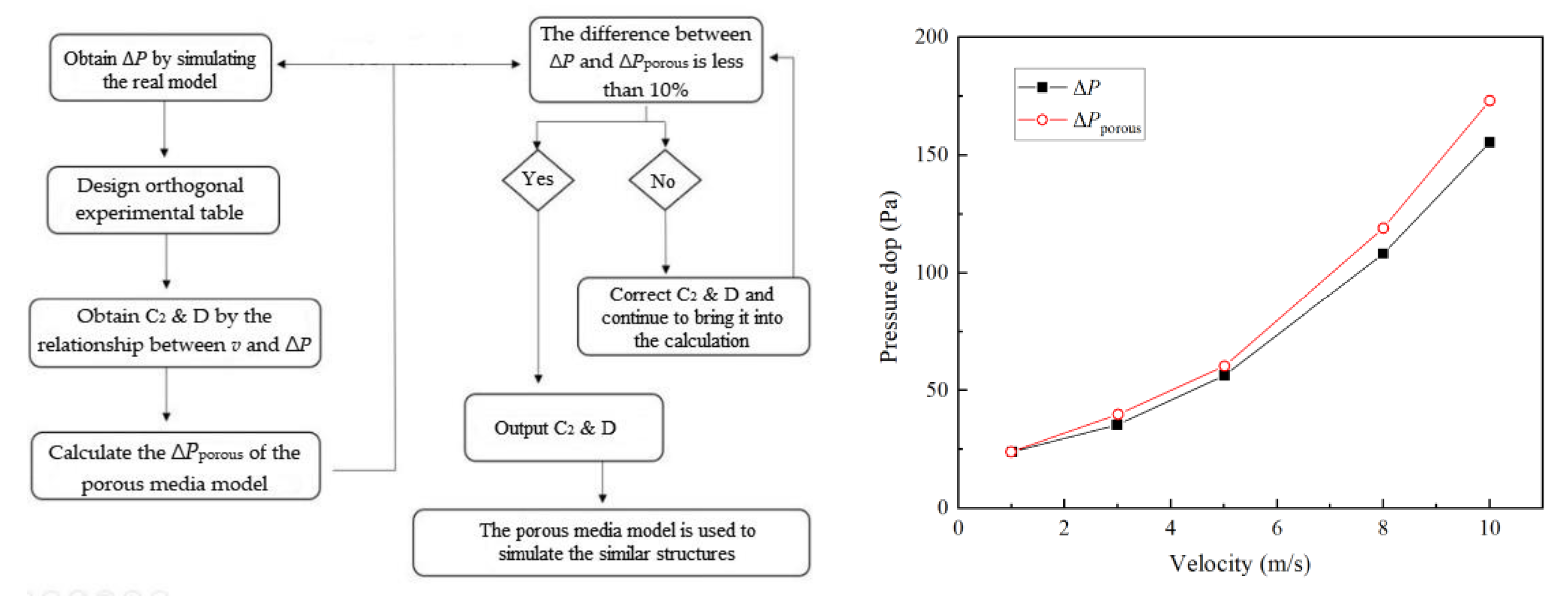

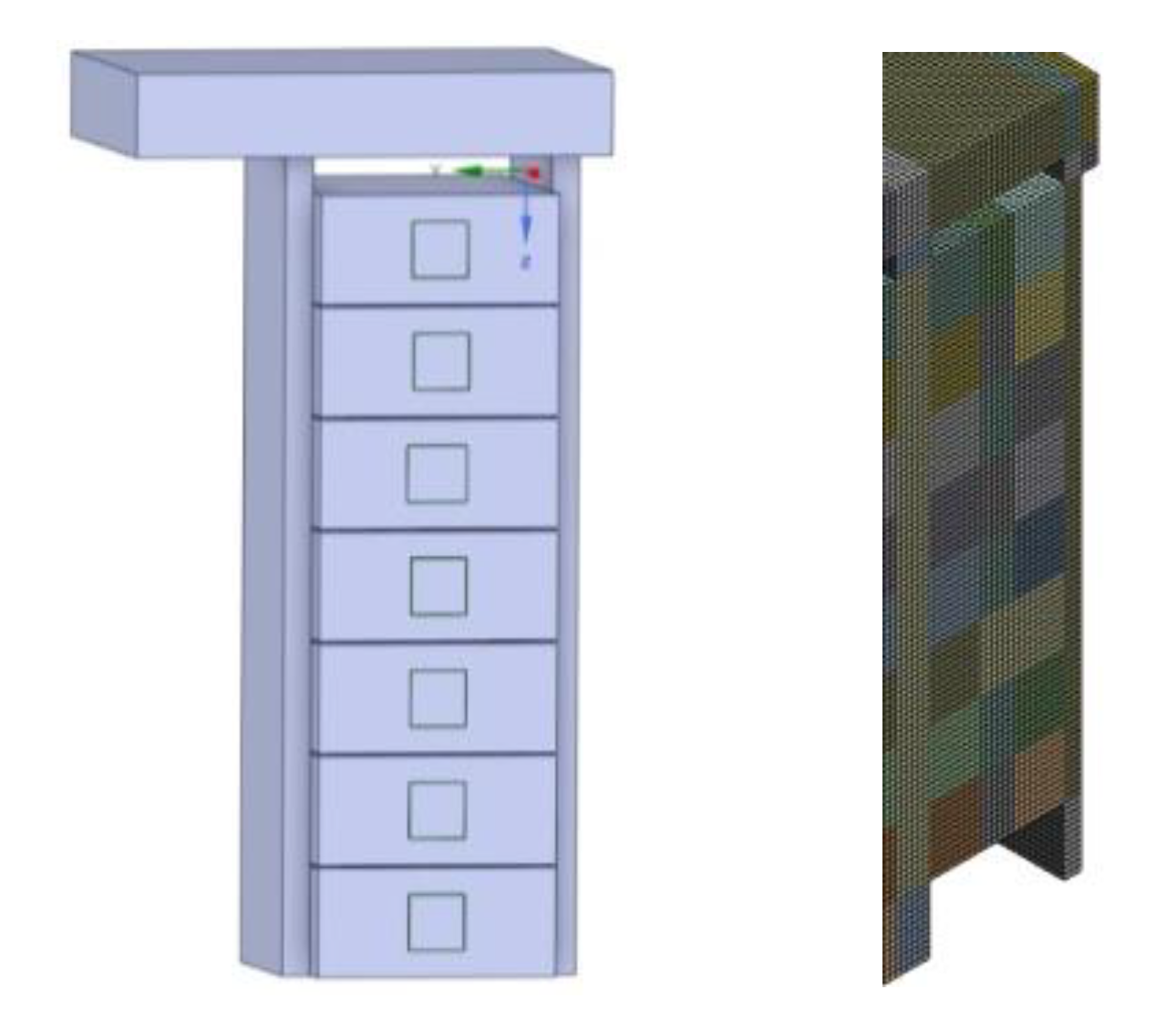
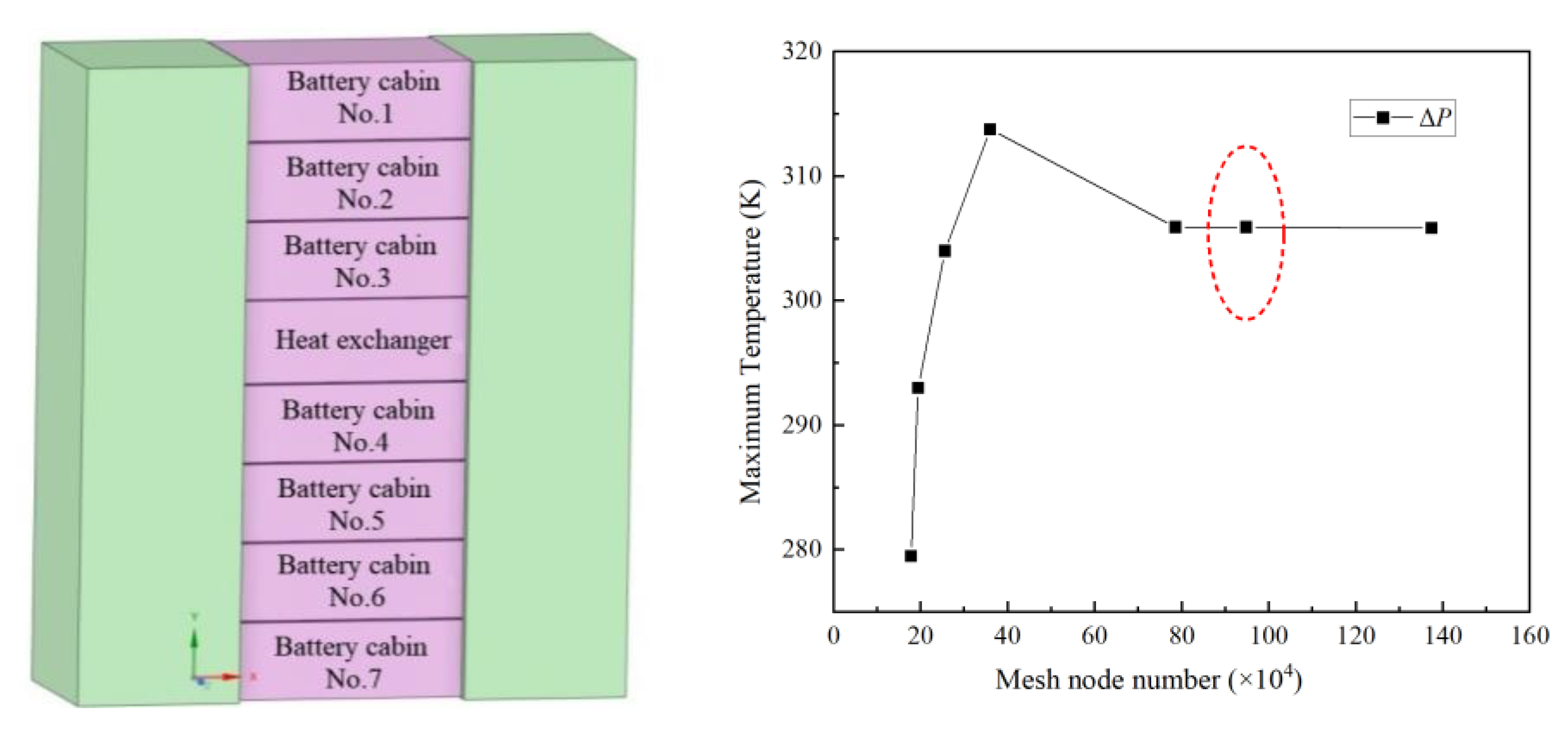
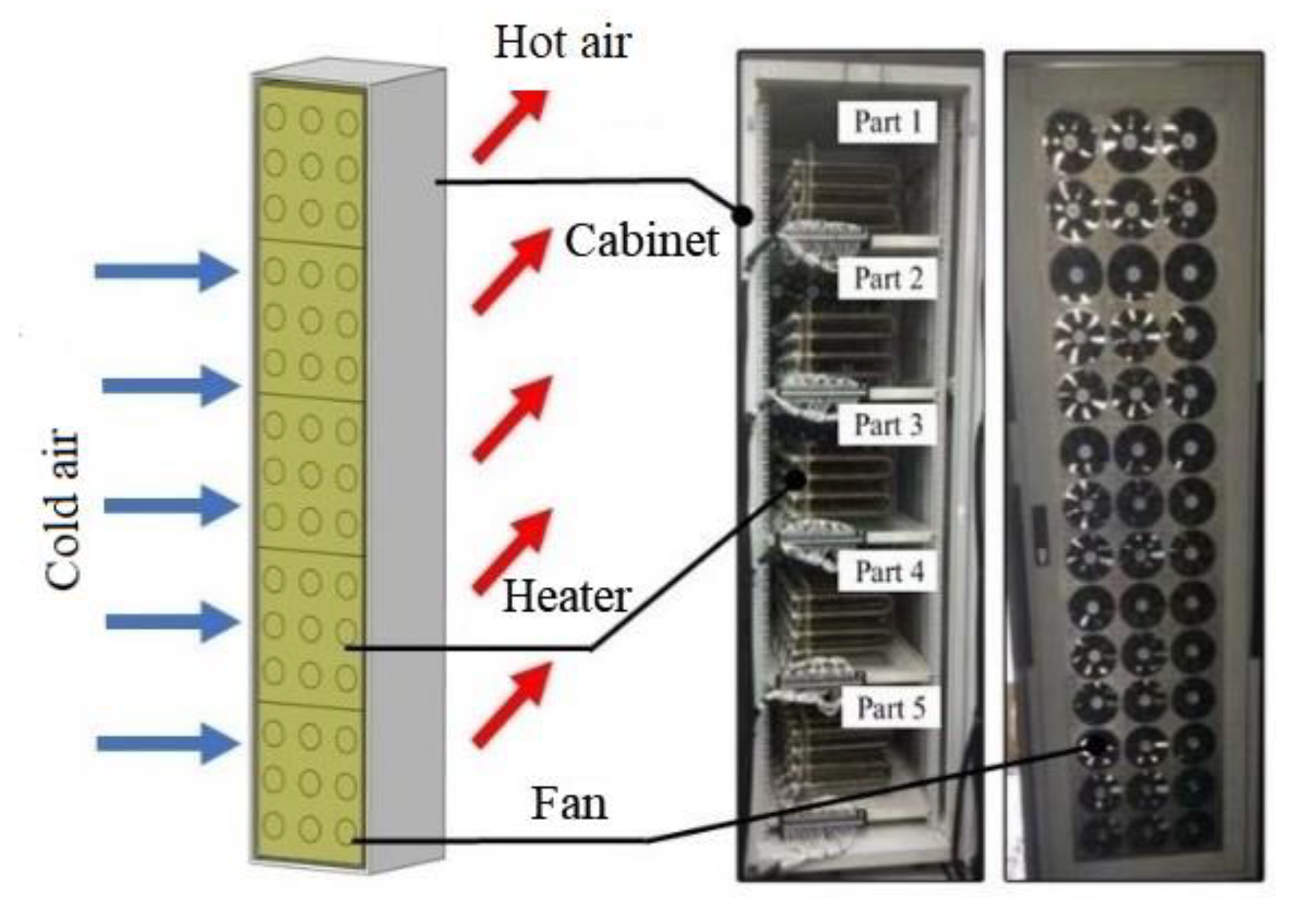
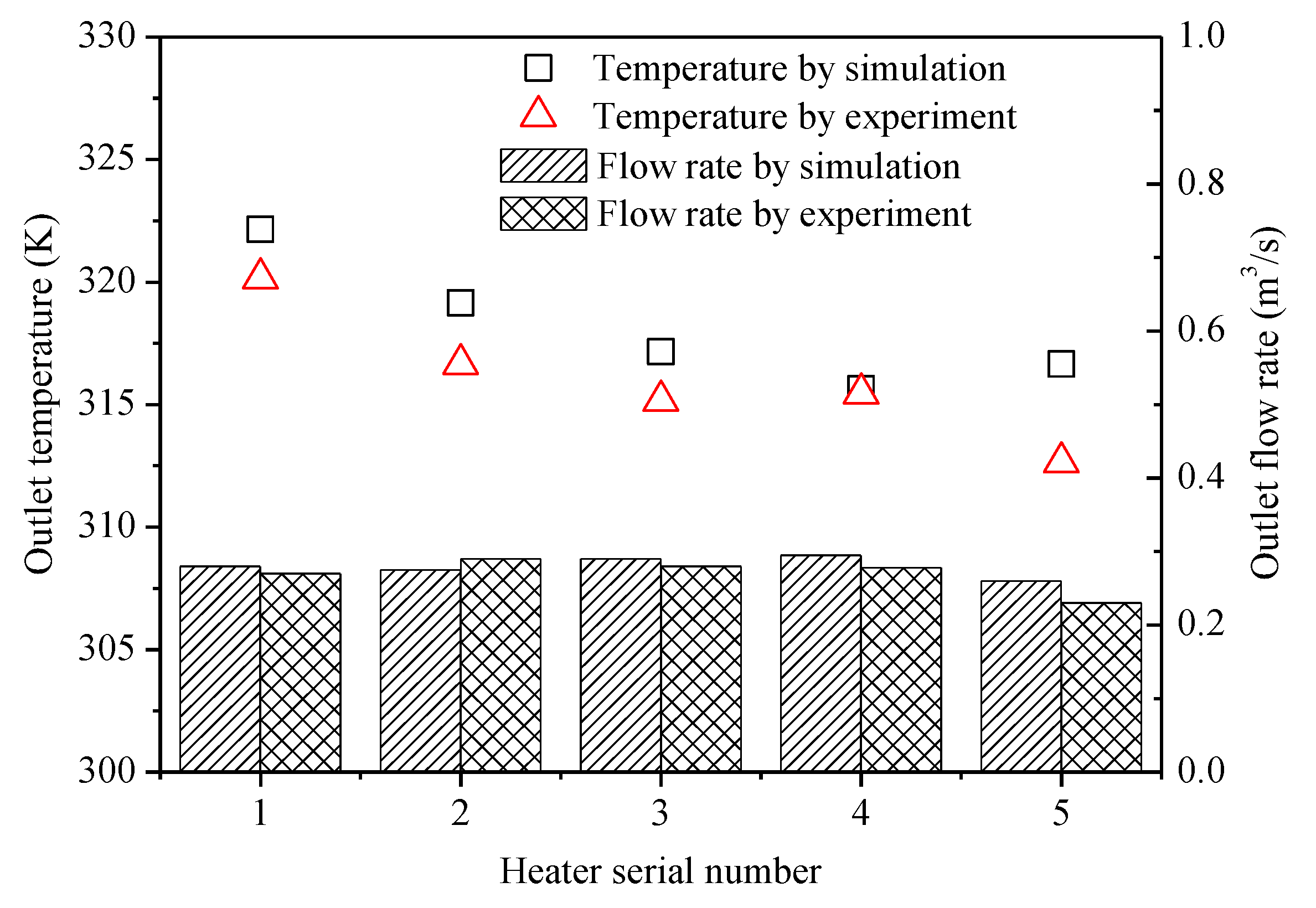
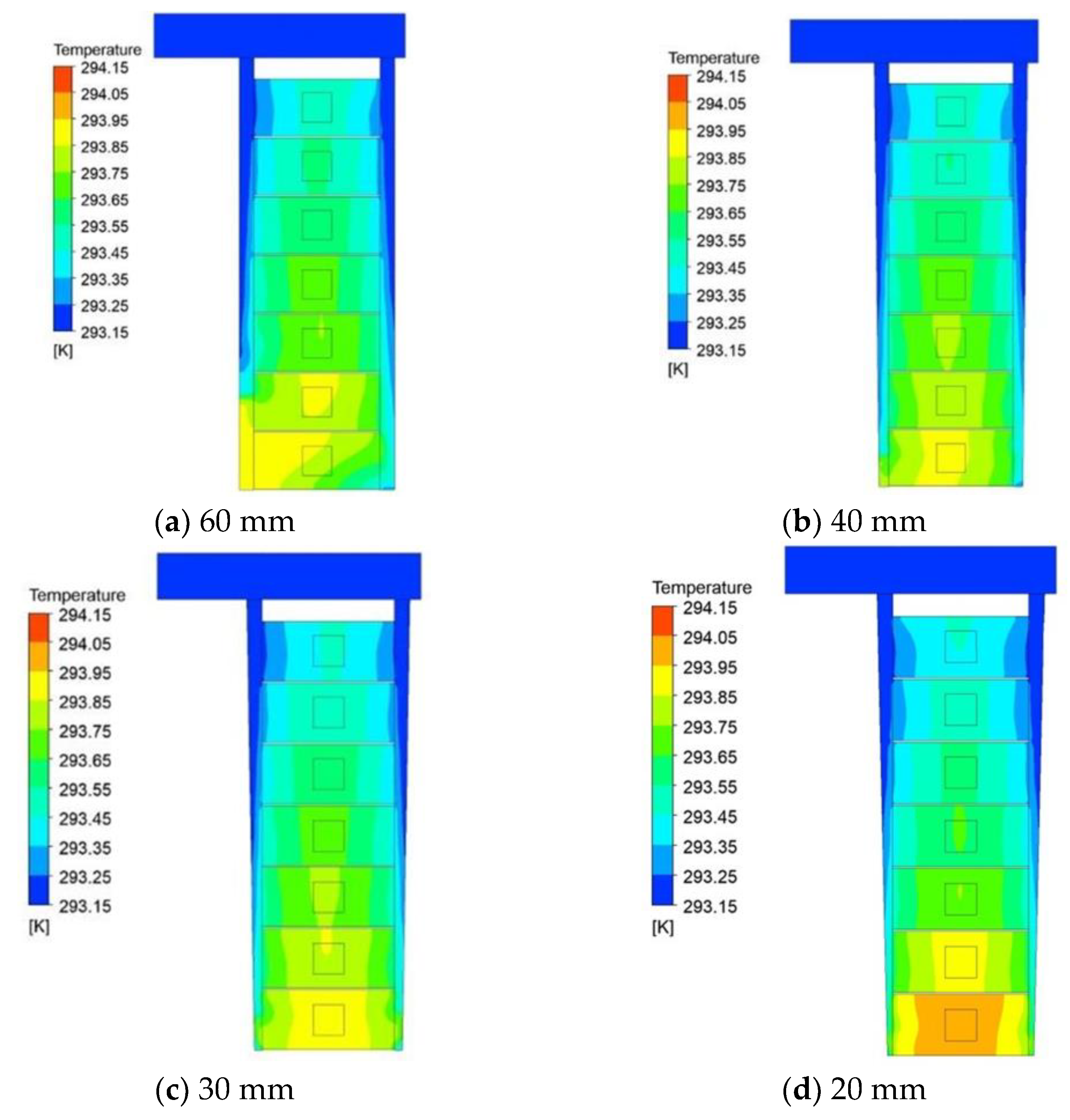
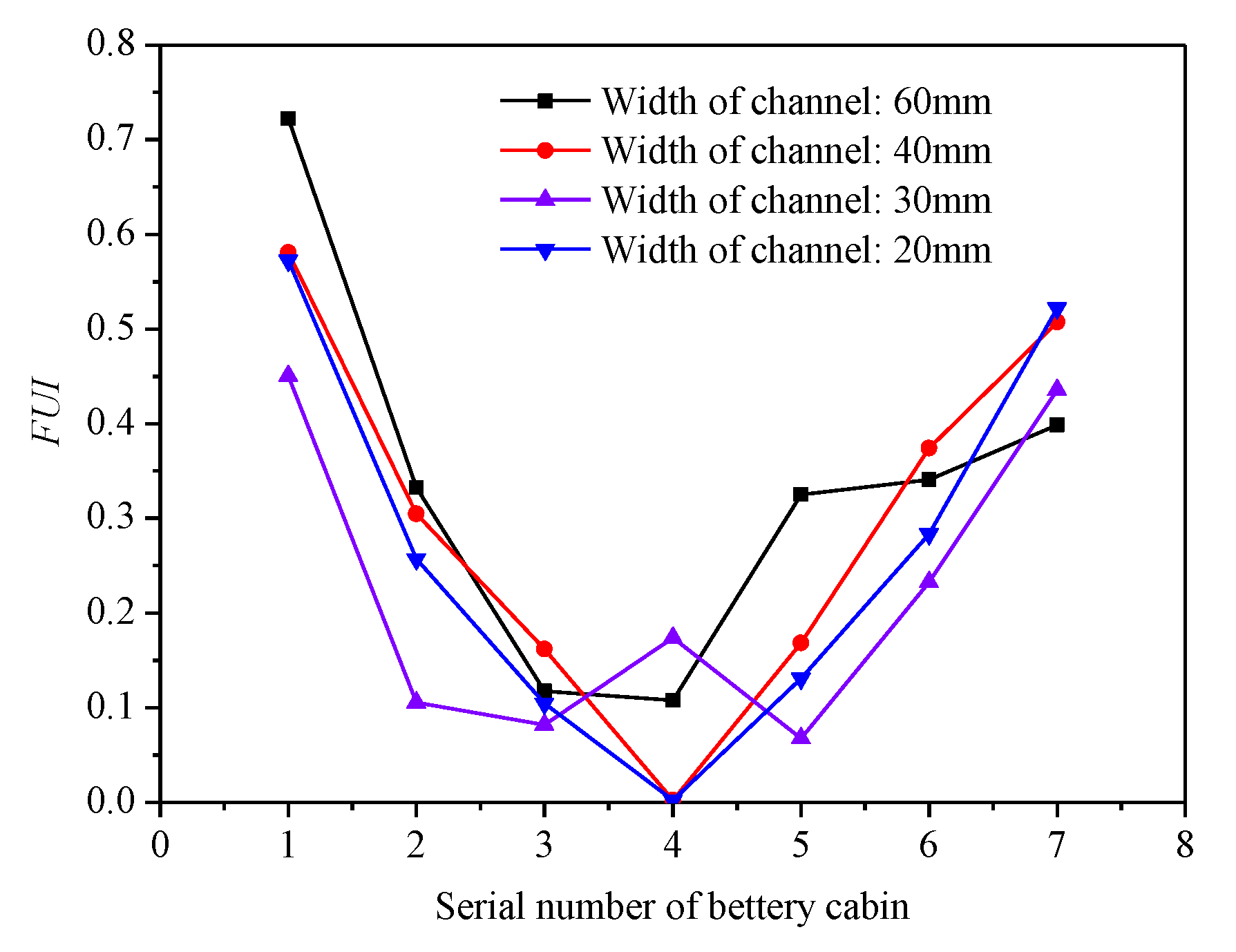

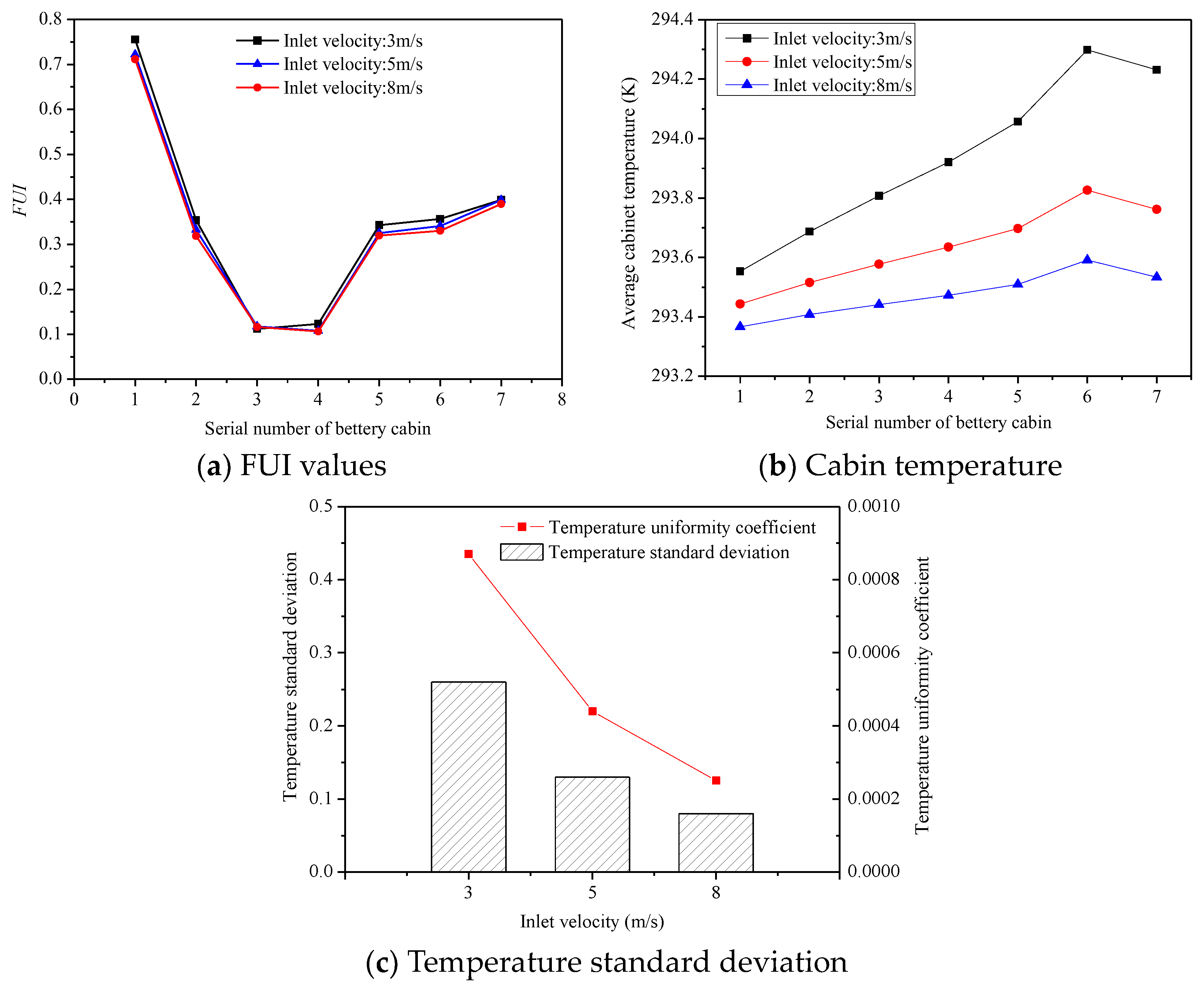
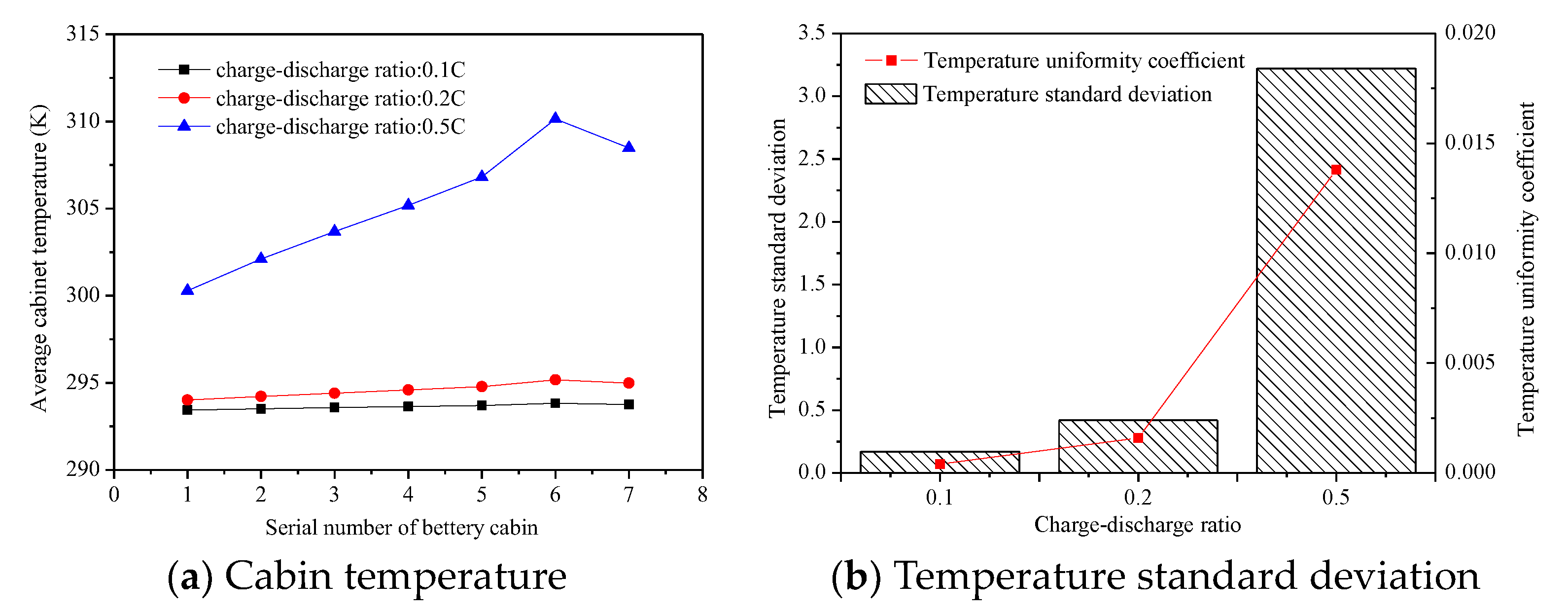

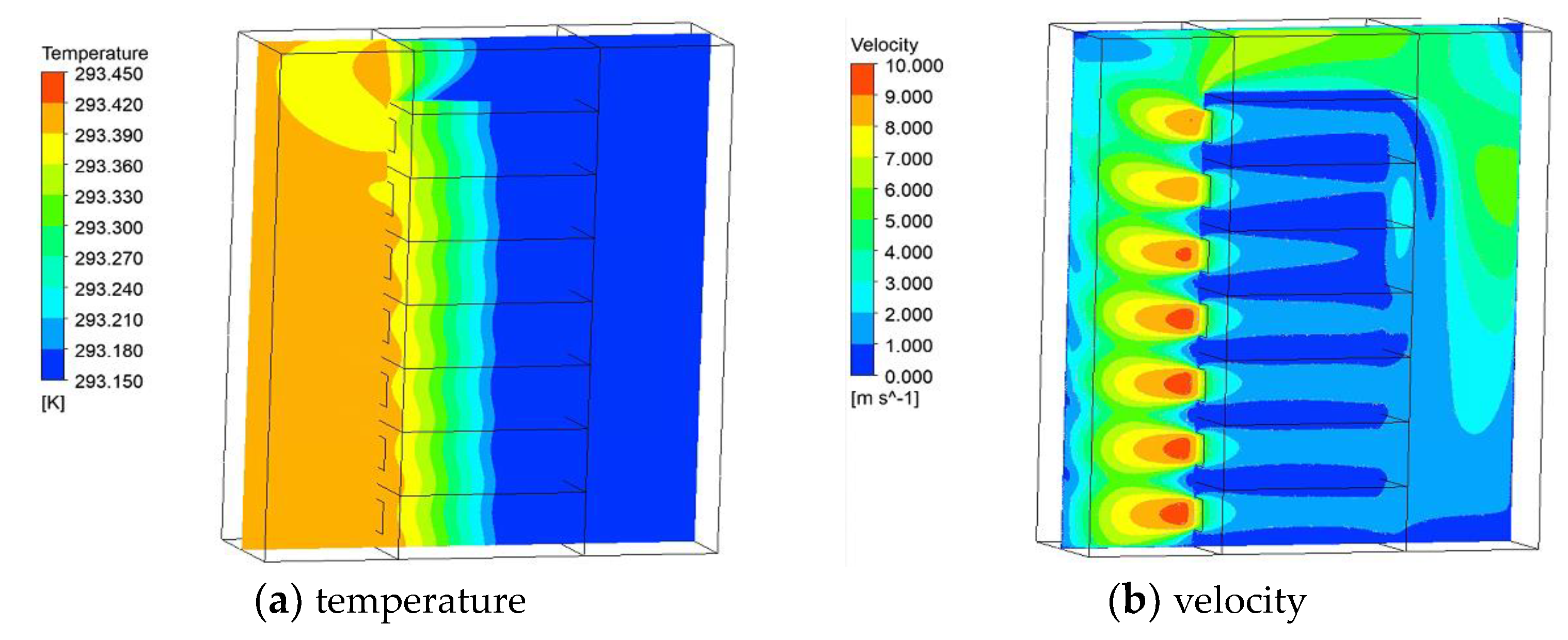
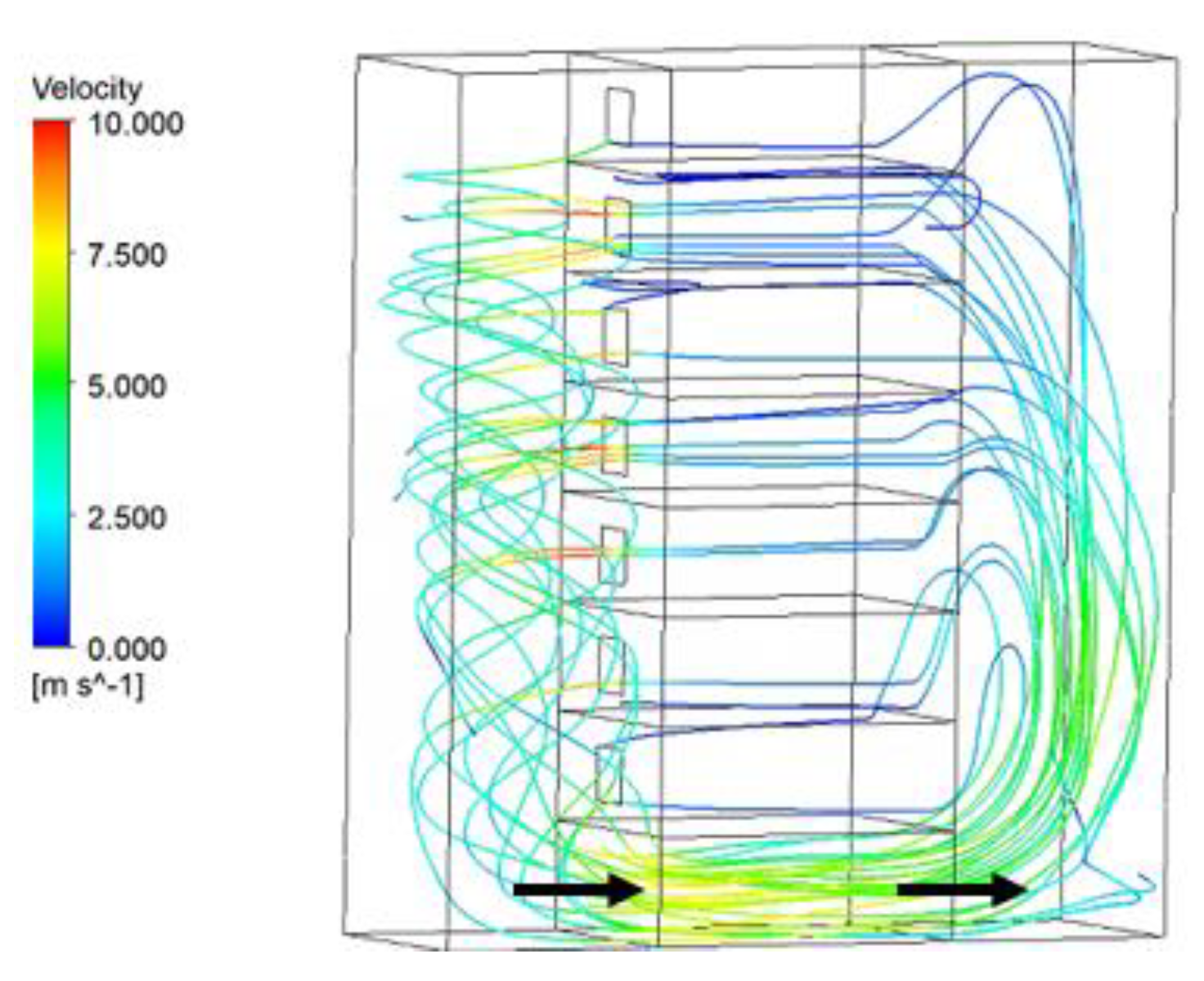
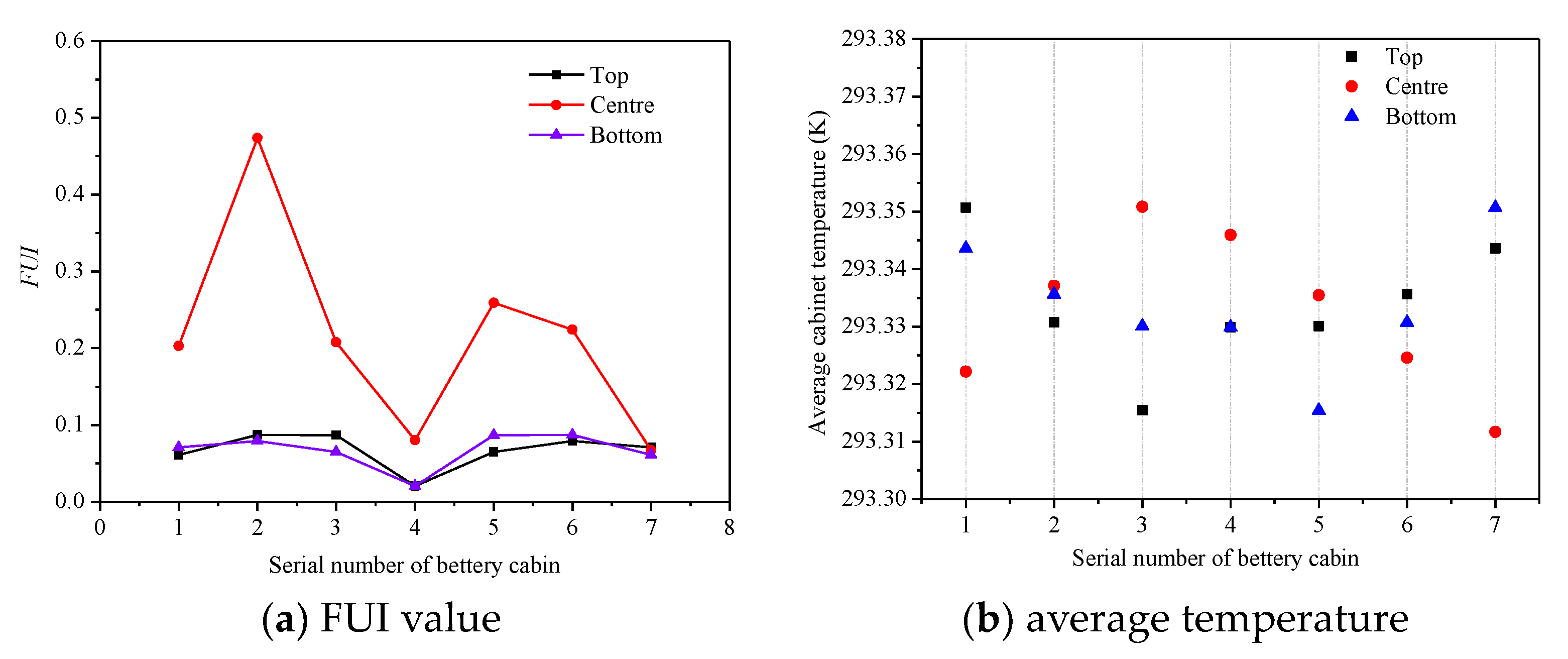
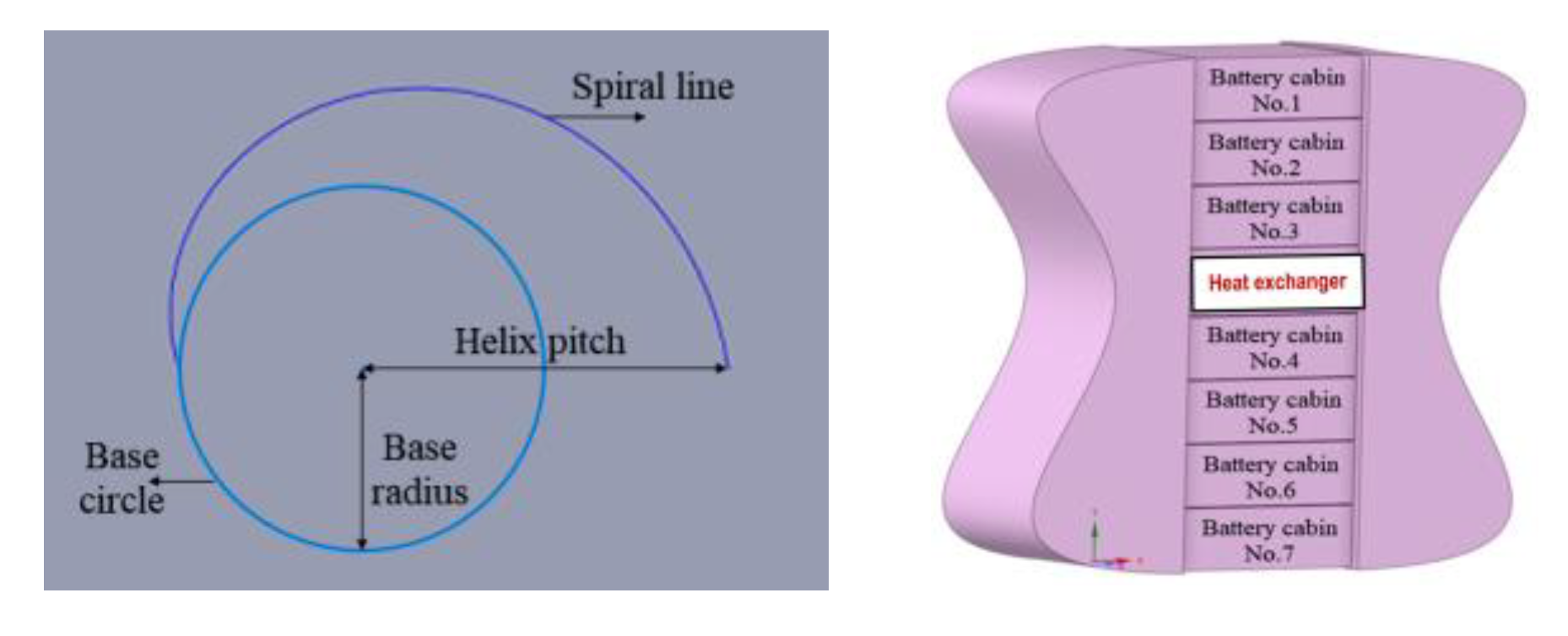

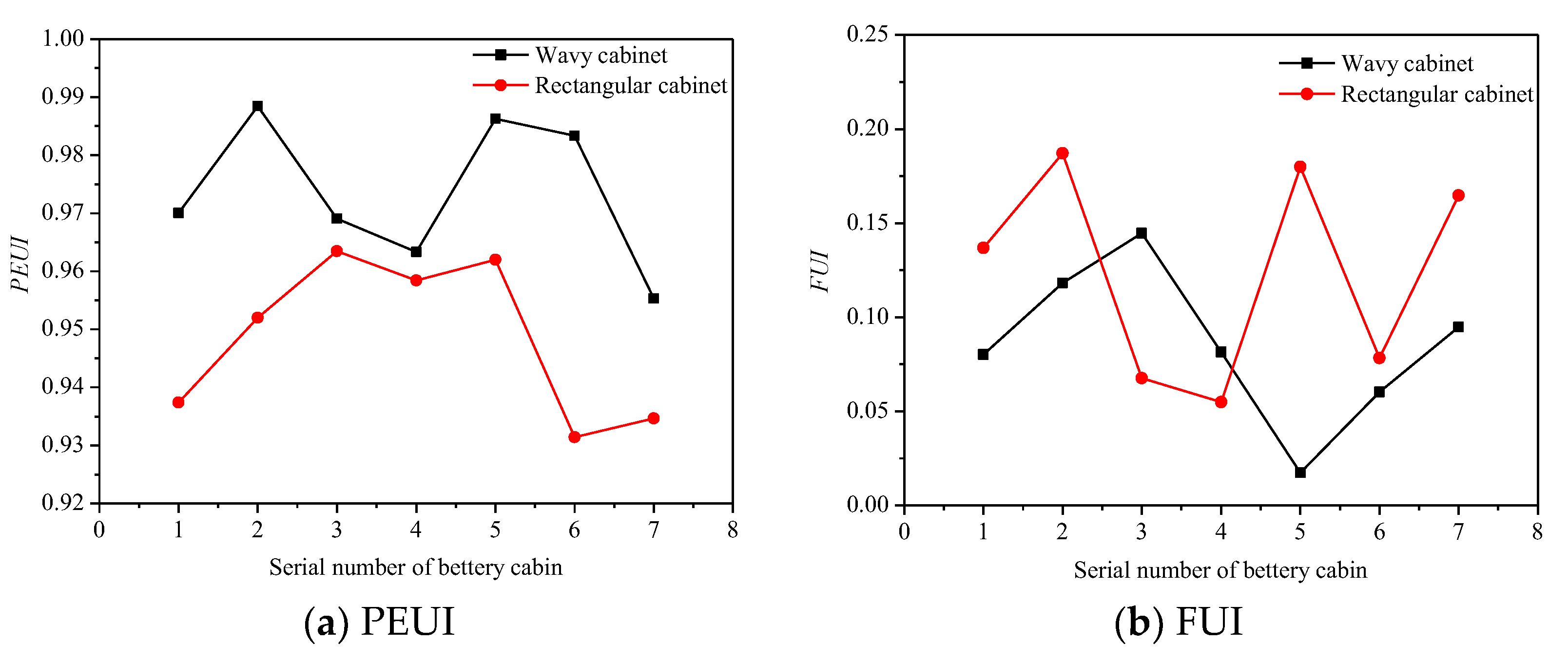
| Term | A Column Spacing Lx/mm | B Linespacing Ly/mm | C Number of Columns Nx | D Number of Rows Ny |
|---|---|---|---|---|
| Variables | A1: 15-30-15 | B1: 20 | C1: 2 | D1: 2 |
| A2: 30-60-30 | B2: 40 | C2: 3 | D2: 3 | |
| A3: 45-90-45 | B3: 60 | C3: 4 | D3: 4 | |
| L3 × 4 table array | ||||
| 1 | A1 | B1 | C1 | D1 |
| 2 | A1 | B2 | C2 | D2 |
| 3 | A1 | B3 | C3 | D3 |
| 4 | A2 | B1 | C2 | D3 |
| 5 | A2 | B2 | C3 | D1 |
| 6 | A2 | B3 | C1 | D2 |
| 7 | A3 | B1 | C3 | D2 |
| 8 | A3 | B2 | C1 | D3 |
| 9 | A3 | B3 | C2 | D1 |
| Spiral Position | Base Radius/mm | Helix Pitch/mm |
|---|---|---|
| Top | 300 | 400 |
| Centre | 100 | 200 |
| Bottom | 300 | 500 |
| Battery Cabin Number | Wavy Cabinet ∆Tmax/K | Rectangular Cabinet ∆Tmax/K |
|---|---|---|
| 1 | 0.37 | 0.47 |
| 2 | 0.38 | 0.47 |
| 3 | 0.37 | 0.45 |
| 4 | 0.37 | 0.46 |
| 5 | 0.37 | 0.46 |
| 6 | 0.37 | 0.48 |
| 7 | 0.39 | 0.48 |
Disclaimer/Publisher’s Note: The statements, opinions and data contained in all publications are solely those of the individual author(s) and contributor(s) and not of MDPI and/or the editor(s). MDPI and/or the editor(s) disclaim responsibility for any injury to people or property resulting from any ideas, methods, instructions or products referred to in the content. |
© 2024 by the authors. Licensee MDPI, Basel, Switzerland. This article is an open access article distributed under the terms and conditions of the Creative Commons Attribution (CC BY) license (https://creativecommons.org/licenses/by/4.0/).
Share and Cite
Dong, Y.; Ding, Y.; Elfeky, K.E.; Qi, Y.; Chu, W.; Wang, Q. Thermal Management for a Stadium Power Supply Container Using a Rack-Level Air Cooling Strategy. Energies 2024, 17, 1654. https://doi.org/10.3390/en17071654
Dong Y, Ding Y, Elfeky KE, Qi Y, Chu W, Wang Q. Thermal Management for a Stadium Power Supply Container Using a Rack-Level Air Cooling Strategy. Energies. 2024; 17(7):1654. https://doi.org/10.3390/en17071654
Chicago/Turabian StyleDong, Yue, Yi Ding, Karem Elsayed Elfeky, Yu Qi, Wenxiao Chu, and Qiuwang Wang. 2024. "Thermal Management for a Stadium Power Supply Container Using a Rack-Level Air Cooling Strategy" Energies 17, no. 7: 1654. https://doi.org/10.3390/en17071654





